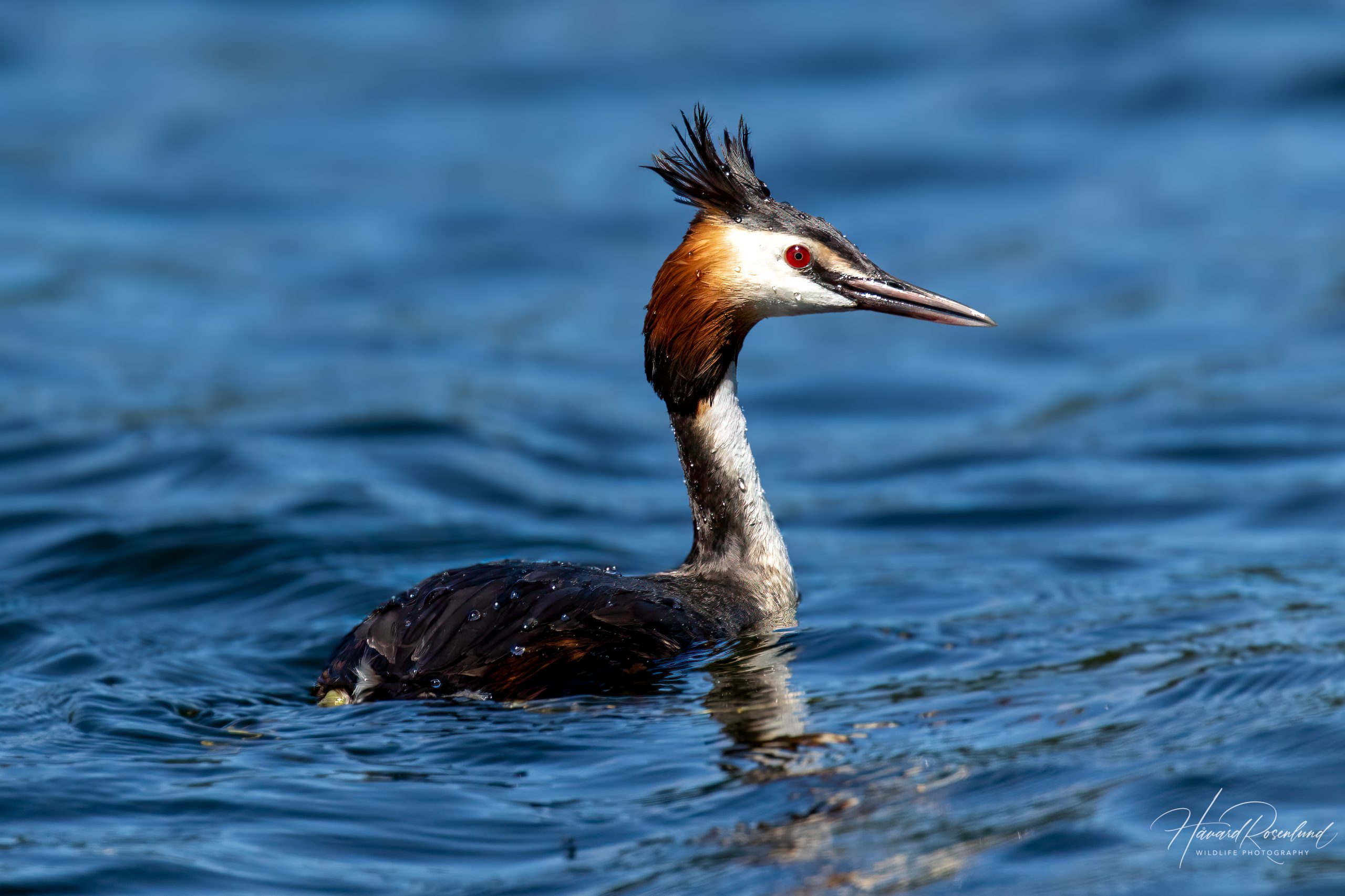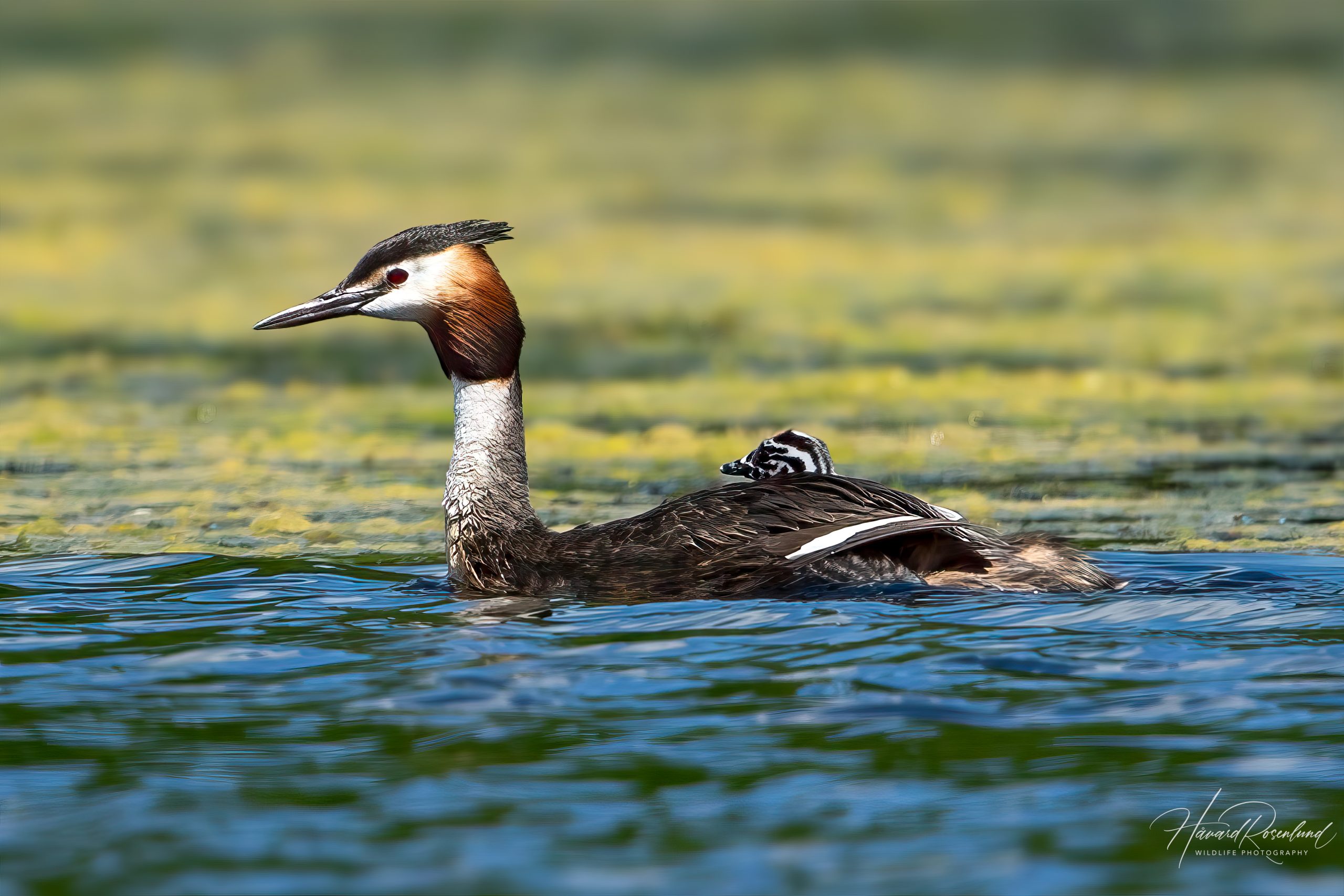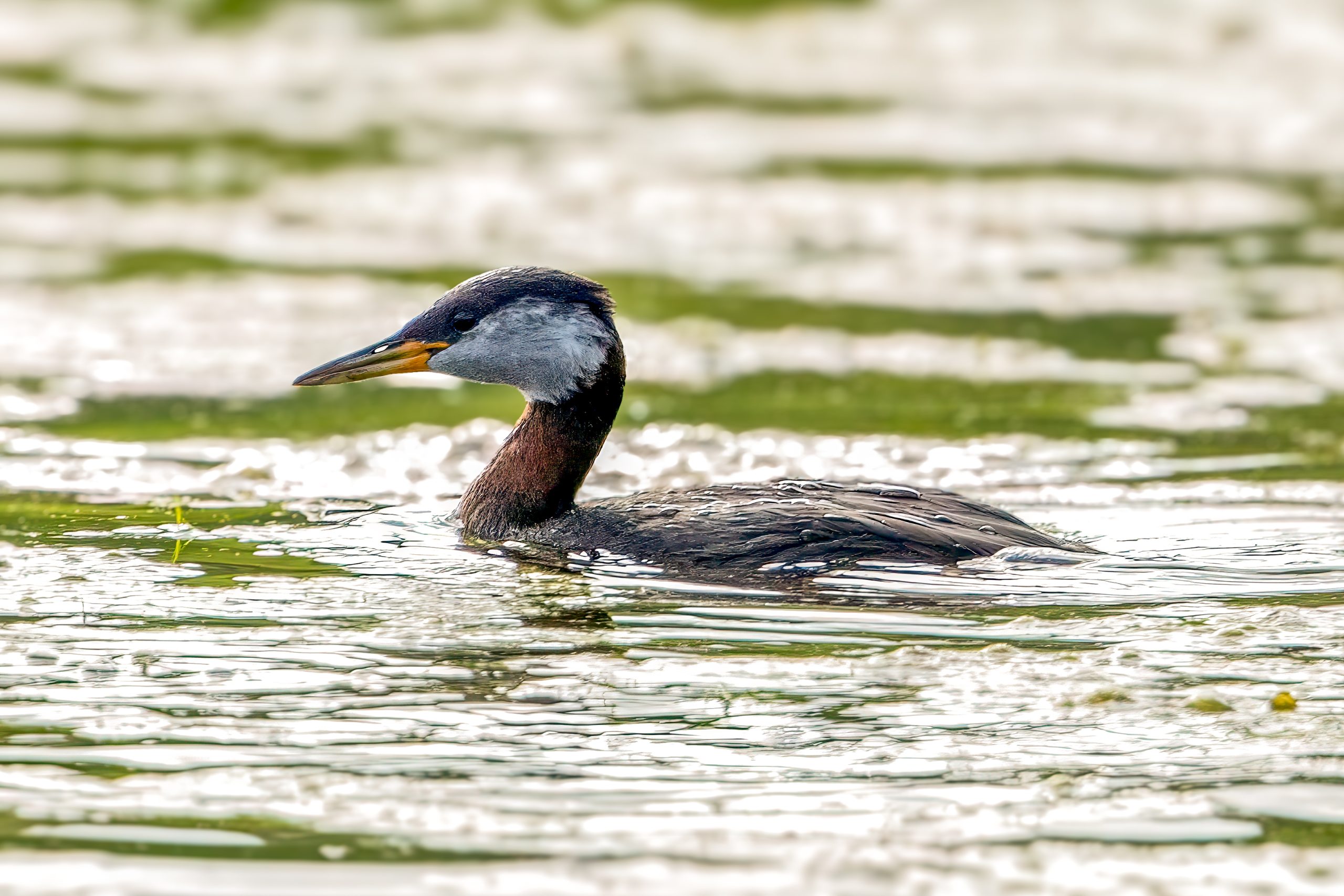Description
The great crested grebe (Podiceps cristatus) is easily recognized by its distinctive appearance and elaborate courtship display. Its range spans Europe, Asia, Africa, and Australasia, favoring freshwater lakes and slow-flowing rivers. Adults typically measure 46-61 cm (18-24 in) in length, with a wingspan of 59-73 cm (23-29 in) and a body mass ranging between 600-1,200 grams (21-42 oz). Its sleek body, adorned with chestnut and black ruffs during the breeding season, and a sharp, slender bill make it unmistakable. Non-breeding adults and juveniles have more subdued plumage but retain the species’ elegant profile.
Diet & habitat
The great crested grebe thrives in a variety of freshwater environments, such as lakes, reservoirs, and large ponds, and can occasionally be found in sheltered coastal waters during the winter. It prefers habitats with abundant vegetation for nesting and rich fish populations for feeding. This species is predominantly piscivorous, diving expertly to catch small fish. Its diet also includes aquatic invertebrates and occasionally amphibians. With its adept diving skills, the grebe propels itself underwater using its powerful legs, steering with precision to capture prey.
Migration
Migration patterns of the great crested grebe vary with geographical location. In temperate regions, populations are generally sedentary, while those in colder climates undertake seasonal migrations to more temperate or coastal areas. For example, northern European populations often move southwards or to the coast from late summer to autumn, covering distances of up to 1,500 kilometers. These migrations ensure access to unfrozen waters during winter.
Nesting
Breeding takes place in spring, with a distinctive courtship display involving head-shaking and synchronized movements. During their display, great crested grebes engage in a “weed dance,” where they present aquatic plants to each other while standing upright on the water, a behavior unique to this species. They are monogamous, forming strong pair bonds that often last for several seasons.
They build floating nests anchored to submerged vegetation, usually in dense reed beds. The female typically lays 3-5 eggs, which both parents incubate for about 27-29 days. Once hatched, the chicks are precocial, meaning they are relatively mature and mobile but still dependent on parental care. They often ride on the parents’ backs for warmth and protection, fledging after approximately 10 weeks.
Status
The great crested grebe is currently listed as least concern by the IUCN, with stable and widespread populations across its range. However, local threats include habitat destruction, water pollution, and disturbance from human activities. Conservation efforts focus on protecting and restoring wetland habitats to ensure the species continues to thrive.






